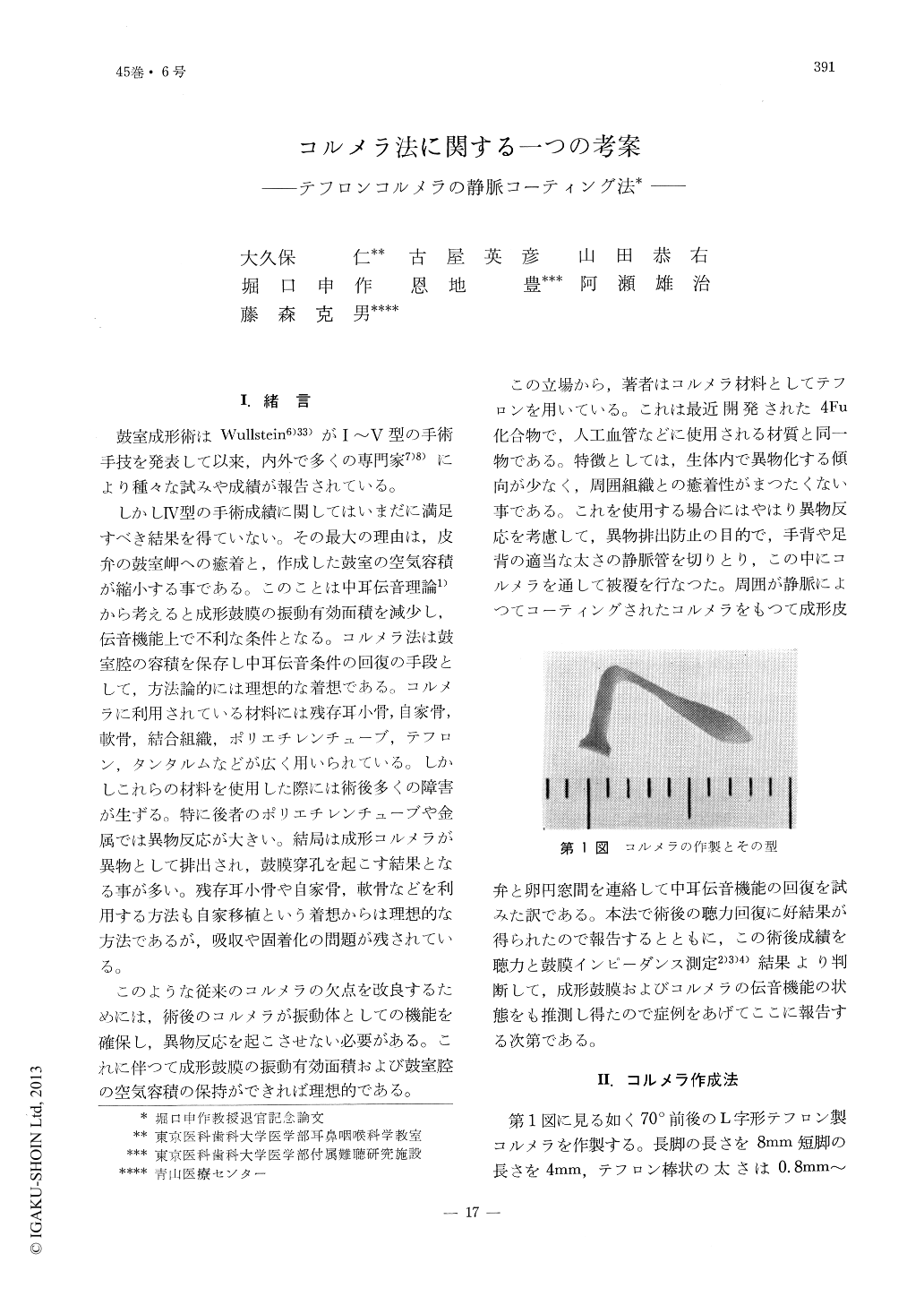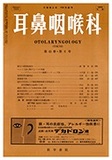Japanese
English
- 有料閲覧
- Abstract 文献概要
- 1ページ目 Look Inside
Ⅰ.緒言
鼓室成形術はWullstein6)33)がⅠ〜Ⅴ型の手術手技を発表して以来,内外で多くの専門家7)8)により種々な試みや成績が報告されている。
しかしⅣ型の手術成績に関してはいまだに満足すべき結果を得ていない。その最大の理由は,皮弁の鼓室岬への癒着と,作成した鼓室の空気容積が縮小する事である。このことは中耳伝音理論1)から考えると成形鼓膜の振動有効面積を減少し,伝音機能上で不利な条件となる。コルメラ法は鼓室腔の容積を保存し中耳伝音条件の回復の手段として,方法論的には理想的な着想である。コルメラに利用されている材料には残存耳小骨,自家骨,軟骨,結合組織,ポリエチレンチューブ,テフロン,タンタルムなどが広く用いられている。しかしこれらの材料を使用した際には術後多くの障害が生ずる。特に後者のポリエチレンチューブや金属では異物反応が大きい。結局は成形コルメラが異物として排出され,鼓膜穿孔を起こす結果となる事が多い。残存耳小骨や自家骨,軟骨などを利用する方法も自家移植という着想からは理想的な方法であるが,吸収や固着化の問題が残されている。
In columella tympanoplasty the use of autogenous bony or cartilagenous tissue is regarded as the most suitable agent. But there are problems in obtaining and shaping of such tissues for this purpose. These problems may be avoided if a foreign body substitutions are made. But here, again, one is faced with the foreign body reaction. In order to circumvent this latter problem many materials have been tested.
By considering the special properties inherent to tefron and autogenous venous tissues which appear to be non-adherent, the authors treated 5 cases of columella tympanoplasty employing tefron covered with venous coating.
All cases showed improvement of hearing.

Copyright © 1973, Igaku-Shoin Ltd. All rights reserved.


